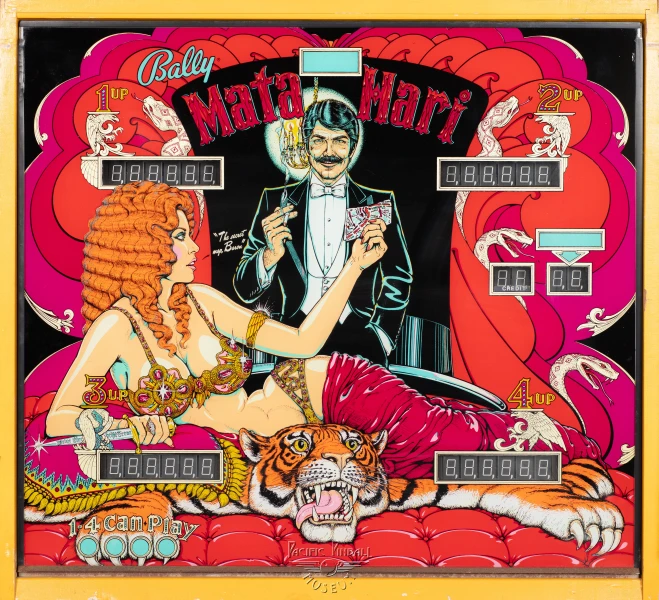Mata Hari
Mata Hari Preview Image

Machine Details
Manufacturer
n/a
Year
n/a
Technology Era
n/a
Machine Description
Content Under Review
Help us improve this content
Your support accelerates our content verification efforts.
Support Our WorkMata Hari, released by Bally in 1978, stands as a significant pinball machine that marked the transition between the electro-mechanical and solid-state eras of pinball manufacturing. The machine was notable for being one of Bally's early solid-state games, featuring both electronic components and traditional mechanical elements, making it a bridge between two technological epochs in pinball history.
The machine's theme was inspired by the infamous World War I spy Mata Hari, incorporating espionage and exotic dancer elements into its artwork and playfield design. The playfield featured a classic layout with four flippers, multiple drop targets, and spinning targets that were innovative for its time. The backglass artwork, created by Paul Faris, became iconic in pinball history for its portrayal of the mysterious female spy.
Mata Hari proved to be a commercial success for Bally, with approximately 4,200 units produced. The game's popularity was enhanced by its reliable hardware design and engaging gameplay mechanics, which included various scoring opportunities and challenging shot combinations. The machine's success helped establish Bally's reputation as a leading manufacturer during the transition to solid-state technology.
Today, Mata Hari is considered a valuable collector's piece, particularly appreciated for its historical significance in representing the dawn of the solid-state era. Its enduring appeal among collectors and enthusiasts stems from both its historical importance and its well-balanced gameplay, making it a frequently sought-after machine for both private collections and public exhibitions.